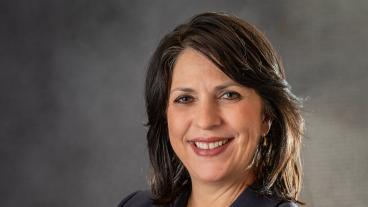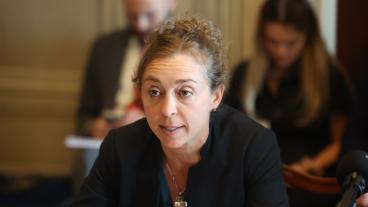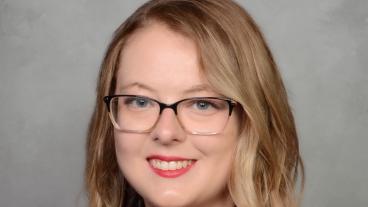Alumni-owned company operates where mud meets methane
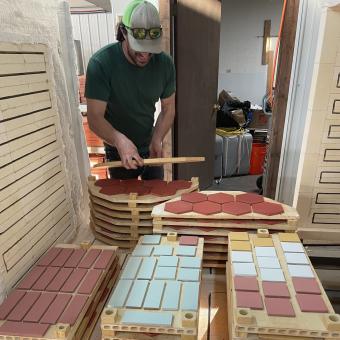
Chris Caskey PhD ’14 loads tile into a glaze kiln. (Photo courtesy of Chris Caskey)
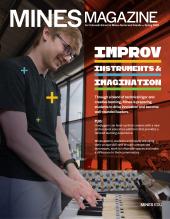
Colorado’s Western Slope is dotted with dormant coal mines, relics of an industry that once powered the region’s economy. But today, the abandoned mines in the North Fork Valley are a growing environmental concern. Methane, a potent greenhouse gas naturally released during coal mining, continues to seep out from underground long after a mine has closed. It’s a significant source of air pollution and a problem the local community has been eager to tackle.
At the same time, the region faces another pressing issue. Sediment from Muddy Creek, a tributary of the Gunnison River’s north fork, has been steadily filling the Paonia Reservoir. The buildup has dramatically reduced the reservoir’s capacity, threatening the area’s water supply—a critical resource for a dry climate reliant on agriculture.
But Chris Caskey PhD ’14 stepped in with a creative solution to both problems. He launched Delta Brick & Climate Company to turn the high-quality clay from the reservoir into bricks, pavers and tile. And rather than relying on conventional energy to manufacture the products, he saw the opportunity to use the very methane leaking from nearby mines to power the process instead.
“They really resonate with each other. If you have an artisan tile company, that’s cool, and if you have a methane capture system where you’re burning gas to get rid of it, that feels like a waste. If we can bring them together where both of these problems are using each other with synergy, that’s what informs it for me,” Caskey said.
Delta Brick currently fires their kilns with standard gas and electric heat as they look at potential sites for methane capture and utilization. They currently produce bricks and pavers, with Particular Tile, a sister company launched in 2022, producing custom clay tile.
Once the manufacturing business was running smoothly, Caskey sold that side of the company to his factory manager so he could exclusively focus on the methane challenge. But bringing the two back together remains the end goal. He even recently purchased an abandoned coal mine and is working on figuring out how to effectively tap into the methane, build out a factory on-site and use the gas to power future manufacturing operations.
This work, Caskey believes, could offer more than just environmental benefits—it could also help shape a more stable economic future for the Western Slope.
“There are a lot of economic transitions happening in mining towns. We saw that happen many years ago with hard rock mining towns—places like Telluride and Leadville and Vail—that became recreation hubs. And that’s happening with coal towns as well,” Caskey said. “But there’s a major affordability crisis when that economy flips, and the folks who did great work bringing us energy aren’t necessarily the ones who get to reap the rewards of some of that economic change. If we still keep some sort of use for these old mine sites, including industrial and manufacturing use, it’s not going to be as many jobs as the actual mine had, but it’s the same skill sets to capture methane.”
It’s a complex and evolving landscape—one that demands creativity and a willingness to take on big problems. For Caskey, that’s part of the draw.
“I like challenges. I like solving problems,” Caskey said. “And I’ve been keyed into the climate challenge for a while and saw that as an opportunity to have some impact.”


